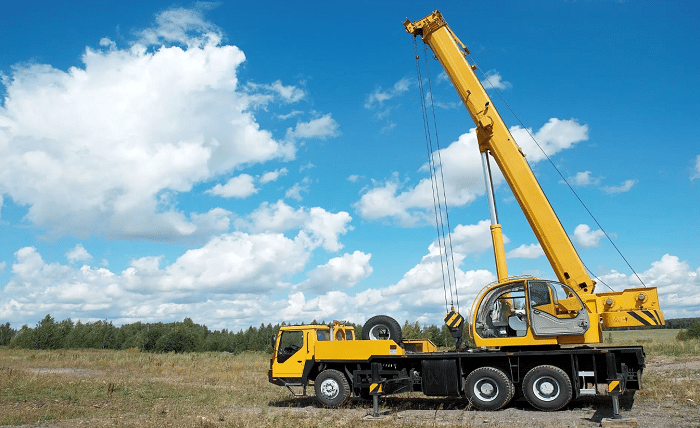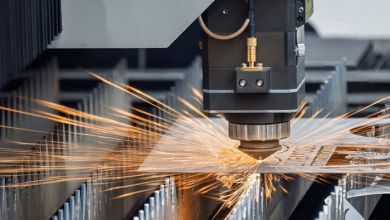
Choosing the right crane for a construction or industrial project starts with understanding the terrain. Many job sites are uneven, rugged, or filled with obstacles that make stability and maneuverability a challenge. In these conditions, rough terrain cranes are the ideal solution. Built to perform where other cranes can’t, they excel in demanding environments. For professionals working on varied sites—from remote mountains to busy urban zones—understanding the benefits of rough terrain cranes is key to ensuring safety, efficiency, and project success.Partnering with a reliable crane rental service can also help ensure you have the right equipment tailored to your specific site conditions.
Designed for Uneven and Harsh Terrain
Rough terrain cranes are built to perform where traditional cranes can’t. With oversized tires, advanced suspension, and four-wheel drive, they handle challenging surfaces like mud, gravel, snow, and rocks with ease. Their sturdy undercarriage provides balance and stability, even on uneven or sloped ground. In contrast, tower and truck-mounted cranes need flat, stable surfaces, often requiring costly site prep and extra stabilization. Versatile and durable, rough terrain cranes are ideal for projects with limited or unpredictable site access.
Compact Yet Powerful
One key advantage of rough terrain cranes in Utah is their compact design paired with impressive lifting power. Many job sites, from mining operations to industrial yards and remote energy locations, lack ample space. In these environments, navigating tight areas efficiently is crucial. While larger cranes offer greater lift heights, they often need more space and longer setup times. Rough terrain cranes, with their small footprint, transport and position quickly. Despite their size, they handle heavy loads with ease, making them ideal for tight spaces and time-sensitive projects.
Simplified Setup and Operation
Unlike many cranes that need complex setups with multiple steps, support vehicles, and large crews, rough terrain cranes are built for efficiency. With quick-deploy hydraulic outriggers, these cranes stabilize fast and are ready to use almost immediately. This simple setup cuts labor costs and speeds up project timelines—perfect for short-term or fast-paced jobs. For teams managing multiple sites, rough terrain cranes offer unmatched flexibility and speed. Operators benefit from intuitive controls, high-visibility cabins, and onboard monitoring systems, all designed to boost safety and productivity. These features make them ideal for tough environments with uneven terrain.
Ideal for Temporary or Remote Sites
Transporting traditional cranes to remote or temporary sites can be a challenge. That’s where rough terrain cranes excel. Designed for short-haul transport, they’re easy to move with standard trailers and offer great mobility. Perfect for one-off tasks or construction in areas with limited road access, these cranes are built for quick deployment. Unlike bulky, permanent cranes requiring extensive assembly, rough terrain cranes are compact and self-sufficient. They can be quickly moved between sites, reducing downtime and eliminating the need for extra transport equipment, making them ideal for remote or temporary projects.
Versatility Across Industries
Rough terrain cranes stand out for their versatility, making them invaluable across industries like energy, oil and gas, transportation, telecommunications, and infrastructure. They perform efficiently in varied conditions, from lifting pipelines in rural areas to installing HVAC units in remote facilities. Their adaptability eliminates the need for multiple machines, saving costs and simplifying logistics. This flexibility makes them a top choice for companies handling diverse projects across industries.
Cost-Effectiveness in Demanding Environments
Specialized cranes might seem costly, but rough terrain cranes often deliver great value for the right job. Built for tough conditions, they eliminate the need for extensive site prep, extra support vehicles, or long setup times—cutting overall project costs. Over time, savings add up. When factoring in transportation, training, fuel efficiency, and timelines, the ROI is clear. Contractors choose rough terrain cranes for their durability and cost-effectiveness. A reliable rough terrain crane can streamline operations, keep projects on track, and stay within budget.
Conclusion
Rough terrain cranes are among the most versatile and reliable solutions for navigating challenging environments. Designed to tackle uneven surfaces and operate in tight spaces, they combine exceptional mobility with impressive lifting power. In the ever-changing conditions of construction sites, these cranes deliver the strength, safety, and flexibility needed to excel, even on the most demanding projects.





